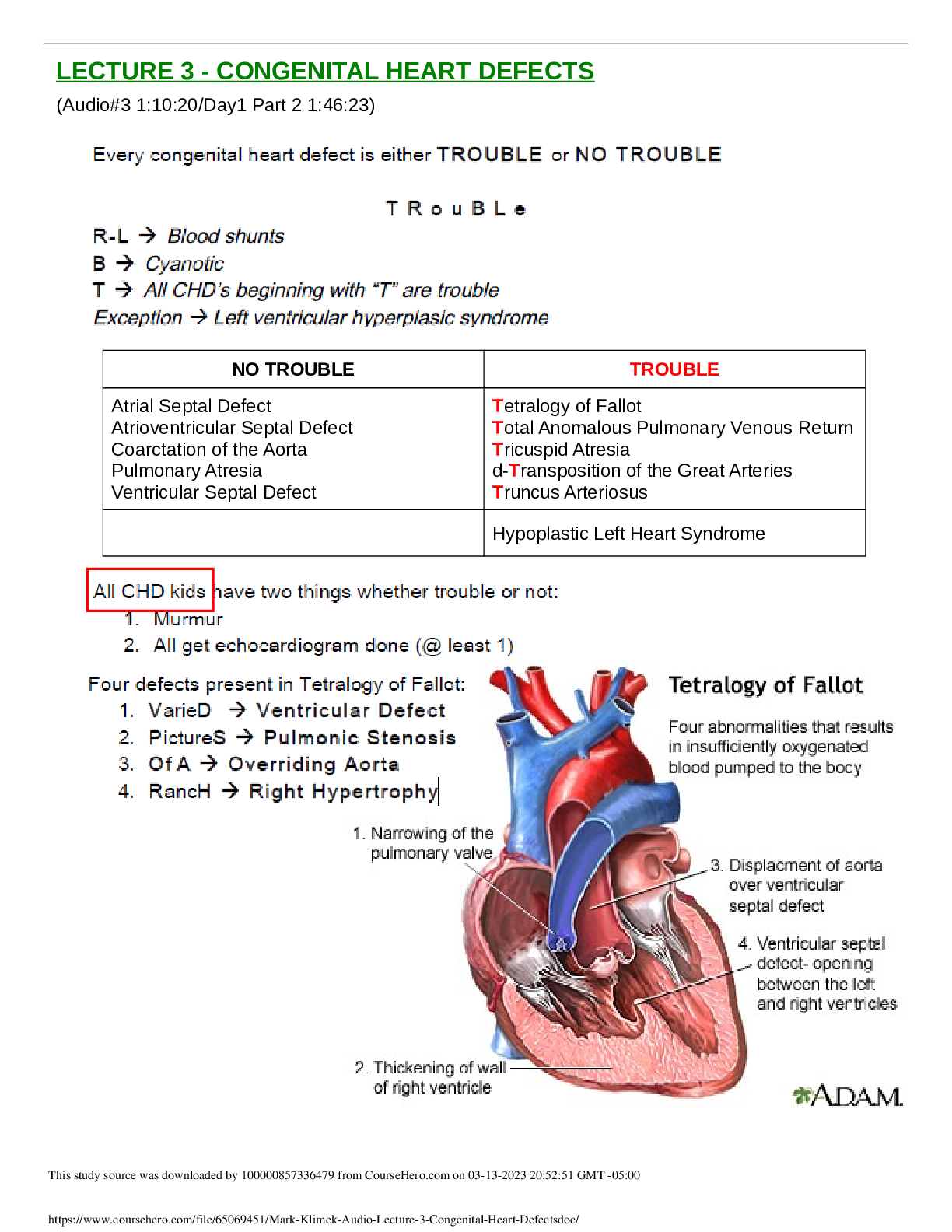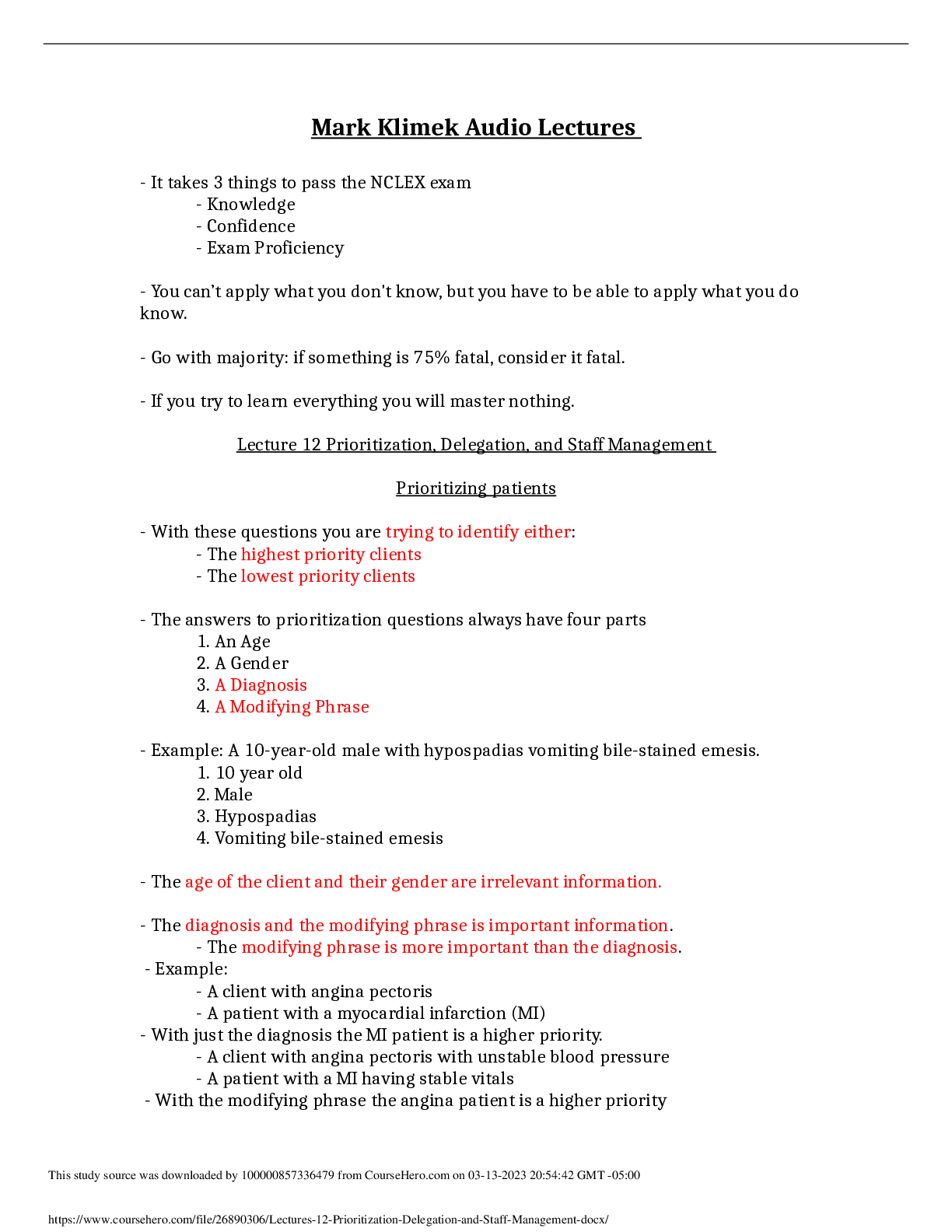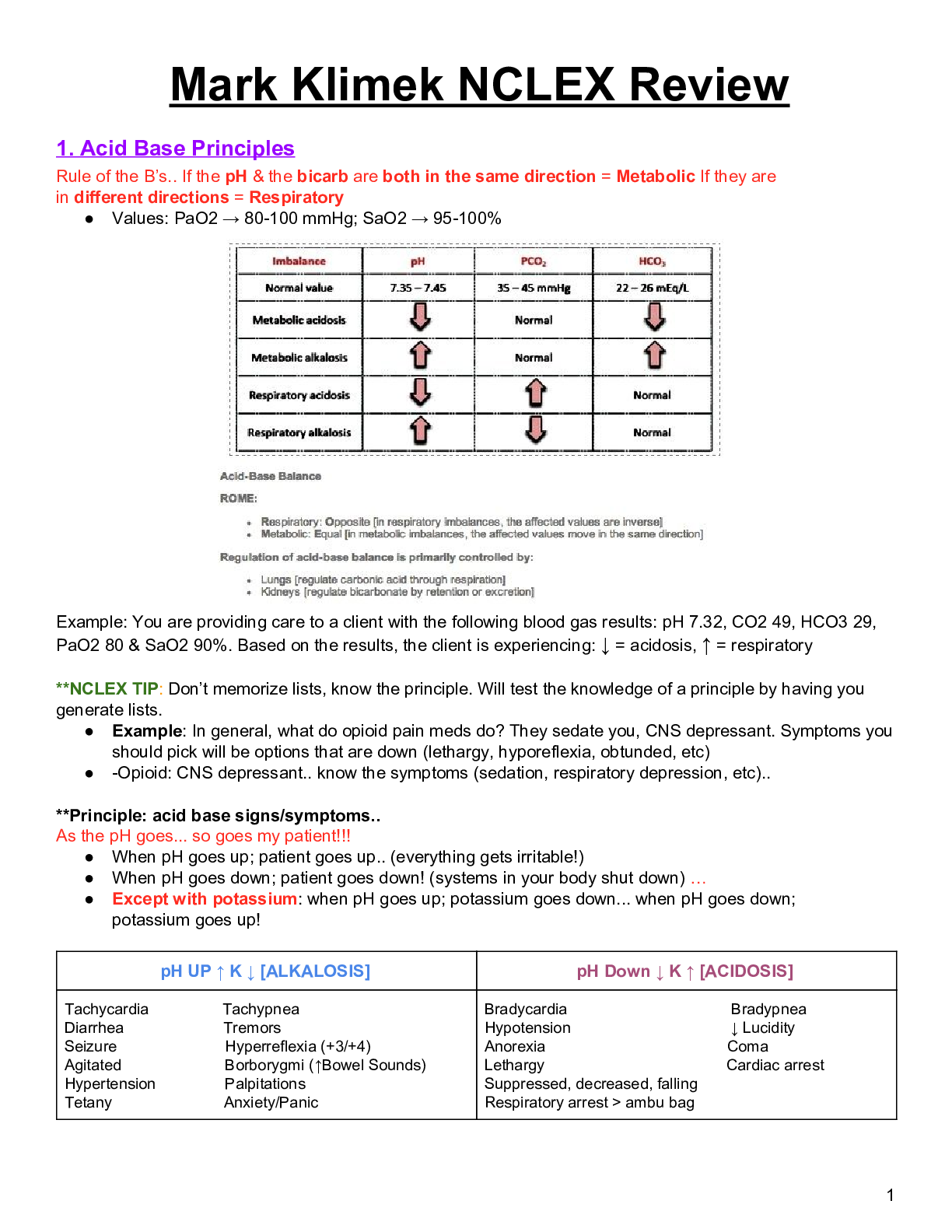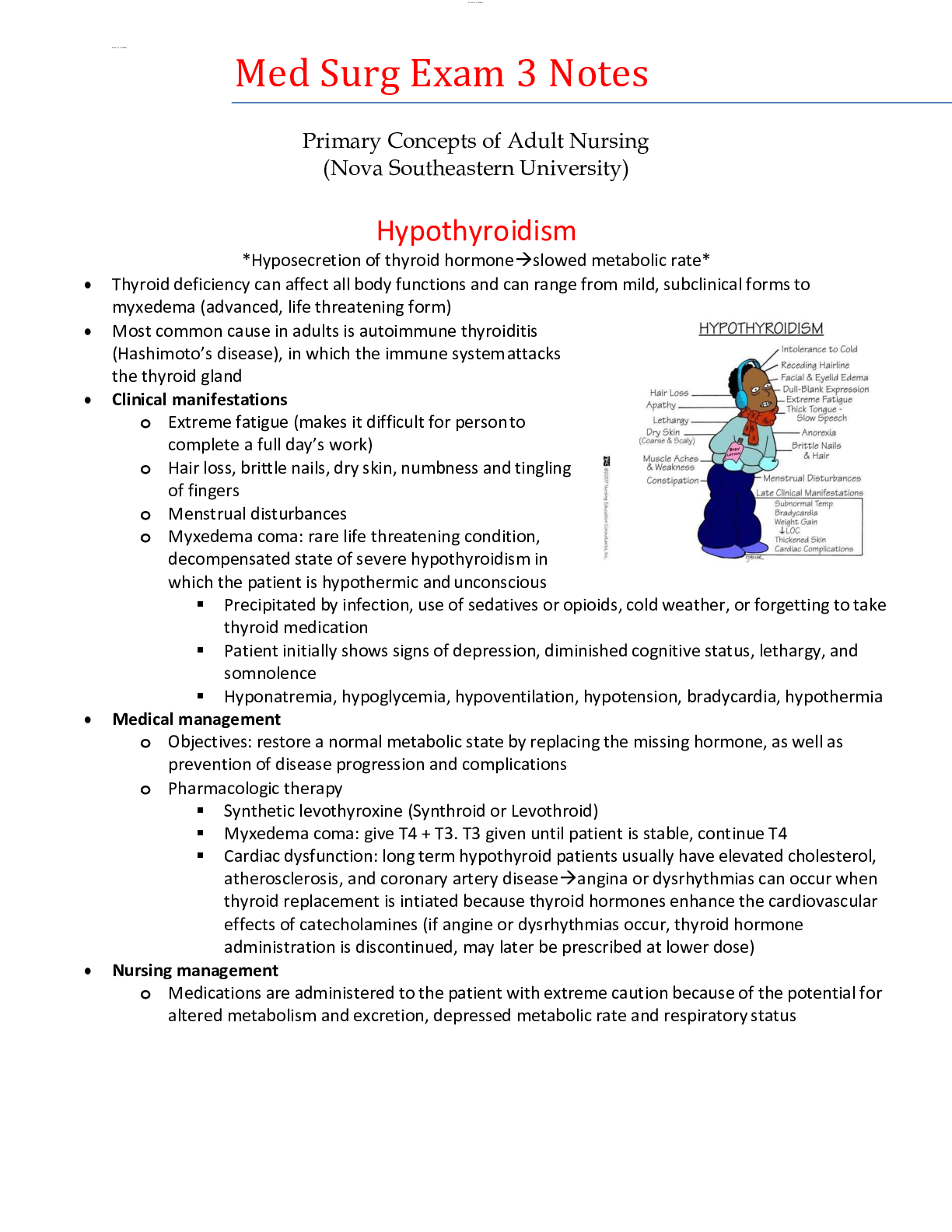*NURSING > STUDY GUIDE > Study Guide Final EXAM SPRING 2020 Primary Concepts of Adult Nursing. (All)
Study Guide Final EXAM SPRING 2020 Primary Concepts of Adult Nursing.
Document Content and Description Below
The examination will contain 100 multiple questions. Time allotted for this exam will be 2 1/2 hours. The following study guide is intended to assist you in preparing for the examination and may no... t contain all information included on the exam. The template is as follows: 2 questions related to chronic disorders; 9 questions related to hematological disorders; 9 questions related to Oncological disorders; 9 questions related to immunological; 9 questions on Upper IG disorders; 8 questions related to Lower GI disorders; 8 questions related to Biliary/Pancreas; 9 questions related to Hepatic disorders; 8 questions related to Endocrine disorders; 9 questions related to endocrine-Diabetes disorders; 8 questions relate to urinary disorders (infectious, obstructive..); 12 questions related to renal disorders (glomerulonephritis, RF, Cancer..) • Chronic disorders: • Hematological disorders: • Oncological disorders: • Immunological disorders: • Upper GI disorders • Lower GI • Biliary/ Pancreatic/ hepatic • Hepatic disorders • Endocrine disorders • Endocrine- Diabetes o Chronic Kidney Disease • Renal disorders/urinary disorders CKD is an umbrella term that describes kidney damage or a decrease in o Acute Nephritic Syndrome Relation with respiratory infections and the cause Clinical Manifestations • Hematuria (RBC casts indicate glomerular injury) Polycystic Kidney Disease PKD is a genetic disorder characterized by the growth of numerous cysts in the kidneys. o Renal Failure Renal failure results when the kidneys cannot remove the body’s metabolic wastes or perform their regulatory function • Assessment and Diagnostic Findings End Stage Kidney Disease or Chronic Renal Failure is used for patients who are acutely ill and require short-term Risk Factors in Older Adults Lower UTIs include: Upper UTIs are much less common and include: Nutritional Therapy: Other Dietary Concerns Hypoglycemia: Emergency Measures Over secretion of the anterior pituitary gland involves ACTH and GH. With over secretion of Growth Hormone, you get acromegaly, which results in enlargement of peripheral body parts without an increase in height. Hypothyroidism also affects women 5x more frequently than men. Thyroid Tumors Thyroid tumors are referred to as goiters. If they accompany hyperthyroidism, then they are considered toxic. Clinical Manifestations • Severe abdominal pain is the primary symptom with acute pancreatitis, usually in the mid-epigastrium • Manage acute pain o Because carbon monoxide is often used in a laparoscopic cholecystectomy, the migration of carbon monoxide may cause pain and a nurse should consider a heating pad for 15 to 20 minutes hourly to help with the pain • Diet: NPO till symptoms subside then clear liquid diet initially & then high fiber, low fat (high fibrous foods: cooked vegetables, bran, grains, legumes, beans, berries (raspberries, blueberries, etc.) whole grains (whole wheat pasta and rice), dark green leafy veggies, seeds, nuts) • Interventions: Colonoscopy to confirm diagnosis o 2-3 L a day of fluids (promote normal elimination patterns) o NG tube o Broad spectrum antibiotics (prevent peritonitis o Small and large bowel obstruction, complications Small bowel complications Untreated, intestinal obstruction can cause Large bowel complications Complications. ... Thus, complications of large-bowel obstruction may include the following • Risk Factors o Obesity o Older Age o Sleep Apnea o Nasogastric Tube o Contributing Factors Type 4 Hypersensitivity Reaction: o Patho: A delayed reaction that occurs 1 to 3 days after exposure; results in tissue damage. reaction marked by acute inflammation resulting from 3 Hypersensitivity Reaction: o Patho: An immune complex o Risks: Thrombosis (CVA, MI), bleeding due to large & dysfunctional platelets Neutropenic precautions: o No fresh fruits or flowers, or meats o No raw foods o No crowds o Wash hands!!! o No children o Peel fruits o Talk over the phone instead of having visitors Anemia: o Patho: condition in which the hemoglobin concentration is lower than normal o S/S: fatigue, dyspnea, tachycardia, confusion, weakness, general malaise, pallor of skin & mucous membranes, N/V, anorexia, glossitis, cheilosis (cracks in corners of mouth), smooth sore tongue, pica (craving for ice or clay) o Diet: organ meats, beans, green leafy vegetables (fried liver & spinach) o Interventions: Manage Fatigue o Maintain adequate nutrition (red/organ meats) o Maintain adequate perfusion o Risks: Heart failure, angina, paresthesias, confusion, delirium, injury r/t falls, depressed mood o RF: diet lacking certain vitamins, intestinal disorders, menstruation, pregnancy, chronic conditions, family hx, age Iron Deficiency Anemia: [Show More]
Last updated: 2 years ago
Preview 1 out of 99 pages

Buy this document to get the full access instantly
Instant Download Access after purchase
Buy NowInstant download
We Accept:

Reviews( 0 )
$11.00
Can't find what you want? Try our AI powered Search
Document information
Connected school, study & course
About the document
Uploaded On
Apr 23, 2020
Number of pages
99
Written in
Additional information
This document has been written for:
Uploaded
Apr 23, 2020
Downloads
0
Views
139









.png)






